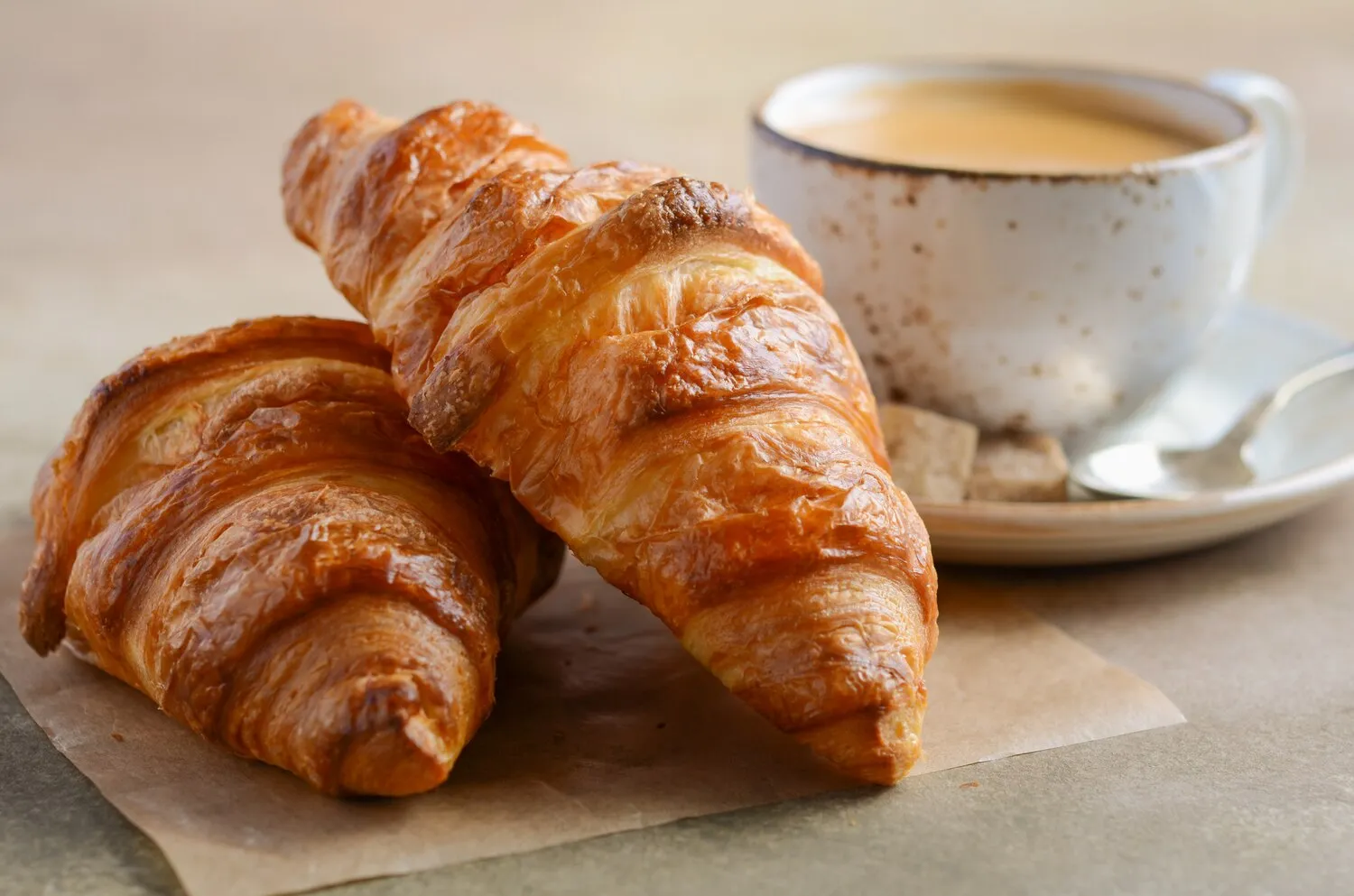
Croissant
A buttery, flaky viennoiserie pastry of Austrian origin, but mostly associated with France.
Nutrition Facts
* The % Daily Value (DV) tells you how much a nutrient in a serving of food contributes to a daily diet. 2,000 calories a day is used for general nutrition advice.
Grão Espresso Shopping Praça da Moça
The croissant's ancestor, the kipferl, originated in Austria. Legend claims it was created in Vienna to celebrate the defeat of the Ottoman Empire in 1683, its shape resembling the crescent on the Ottoman flag. It wasn't until the mid-19th century, with the establishment of Austrian bakeries in Paris, that the croissant, as we know it today, began to evolve and become a French staple.
The croissant has become deeply embedded in French culture, representing a quintessential breakfast or snack. It's more than just food; it's a symbol of French culinary artistry and daily life.
Breakfast Staple
The croissant is a classic French breakfast item, often enjoyed with coffee. It's commonly purchased fresh from a local boulangerie (bakery) each morning.
Symbol of French Pastry
The croissant is considered a symbol of French pastry expertise and the viennoiserie tradition (baked goods made in the style of Vienna).
Café Culture
Enjoying a croissant at a café, either plain or filled, is a common and cherished part of French café culture.
The croissant boasts a rich, buttery flavor balanced with subtle sweetness and a delicate, yeasty tang. Its flaky texture provides a satisfying contrast to the tender, layered interior.
The dominant flavor is undeniably butter. High-quality butter, typically European-style with a high fat content, is crucial for achieving the desired flavor and texture. The subtle sweetness comes from the addition of sugar to the dough. A hint of salt balances the richness, and the yeast contributes a characteristic tang and aroma. The layered structure, achieved through repeated folding and rolling, traps air and steam during baking, resulting in the flaky, airy texture.
Butter Quality
Use high-quality butter with a high fat content (at least 82%) for optimal flavor and flakiness. European-style butter is often preferred.
Dough Temperature
Maintain a consistent dough temperature throughout the lamination process (folding and rolling). The butter should remain cold and firm to prevent it from melting into the dough.
Resting Time
Adequate resting time between folds allows the gluten to relax, making the dough easier to work with and preventing it from shrinking during baking.
Proofing
Proper proofing (allowing the dough to rise) is crucial for a light and airy croissant. Over-proofing can lead to collapse, while under-proofing can result in a dense texture.
Baking Temperature
Bake at a high temperature initially to create steam and promote rapid rising, then lower the temperature to ensure even baking and a golden-brown color.
Explore additional Pastry dishes and restaurants
Explore PastryDiscover top dining spots and culinary experiences in Diadema.
Explore DiademaLearn more about the food culture, restaurant scene, and culinary heritage of Brazil.
Explore Brazil
